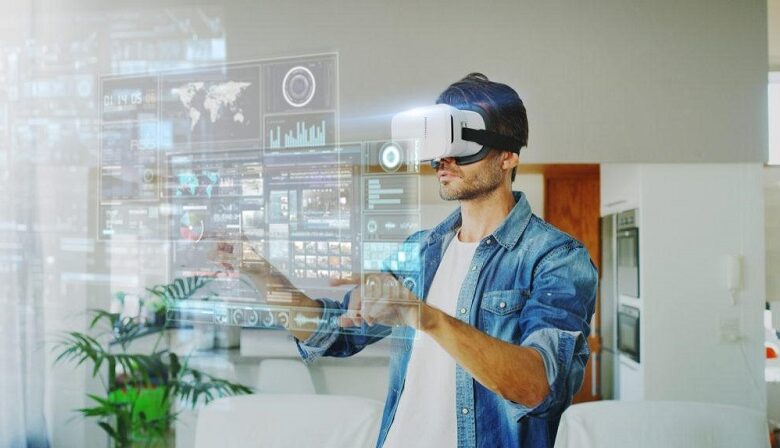Virtual Reality (VR) and Augmented Reality (AR) in Education: Unlocking Immersive Learning

Virtual Reality (VR) and Augmented Reality (AR) have emerged as revolutionary technologies with transformative potential in various industries. Their application in education is nothing short of revolutionary, as they offer immersive and interactive learning experiences that captivate students like never before. However, alongside the numerous benefits, there are certain challenges that educators and institutions must navigate as they integrate these cutting-edge technologies into the classroom.
The impact of VR and AR in education is undeniable. These technologies provide students with hands-on, immersive experiences that capture their attention and foster active participation. Complex concepts that might have once seemed abstract become tangible, leading to a deeper understanding and improved retention of knowledge.
One of the key advantages of VR and AR in education is their ability to allow learners to interact with 3D objects and scenarios. This capability makes even the most abstract subjects more concrete and accessible. Students can virtually dissect organisms, explore historically significant sites, or even conduct scientific experiments without ever leaving the classroom.
Furthermore, fields that demand practical skills and hands-on experience, such as medicine, engineering, and aviation, greatly benefit from VR and AR simulations. These technologies provide a safe and controlled environment for practicing complex procedures, enhancing skill development and boosting students’ confidence.
VR and AR also have the remarkable ability to bridge geographical gaps. They allow students to embark on virtual journeys to different parts of the world, immersing themselves in diverse cultures and broadening their global awareness. This aspect of VR and AR can be a powerful tool for cultivating global citizens with a deep understanding of the interconnected world.
However, implementing VR and AR in education is not without its challenges. One of the primary hurdles is the cost associated with these technologies. Institutions need to invest in specialized equipment and software to effectively integrate VR and AR into the learning environment. This initial financial outlay can be substantial and may require careful budgeting and planning.
Technical issues are another potential roadblock. Glitches or compatibility problems can disrupt the learning experience, requiring teachers to be proficient in troubleshooting and maintaining the technology. Ensuring that the systems run smoothly is crucial to delivering uninterrupted lessons.
Moreover, prolonged use of VR headsets can lead to discomfort, motion sickness, and eye strain, especially among younger learners. It is essential to strike a balance between the educational benefits of VR and AR and the health considerations of the students. Proper guidelines and breaks should be incorporated into lesson plans to mitigate these potential adverse effects.
Despite these challenges, the potential of VR and AR in education is vast and promising. As technology continues to advance, these immersive learning experiences will likely become more accessible and affordable, making them an integral part of modern education.
VR and AR are ushering in a new era of education by providing students with immersive and interactive learning opportunities. From making abstract concepts tangible to offering practical training in various fields, these technologies have the power to revolutionize how we educate future generations. While challenges such as cost, technical issues, and health considerations must be addressed, the benefits of VR and AR in education are too significant to ignore. As these technologies continue to evolve, educators and institutions must embrace them as tools that can enhance the learning journey and prepare students for the challenges of the future.
News Mania Desk / Agnibeena Ghosh 19th September 2023






